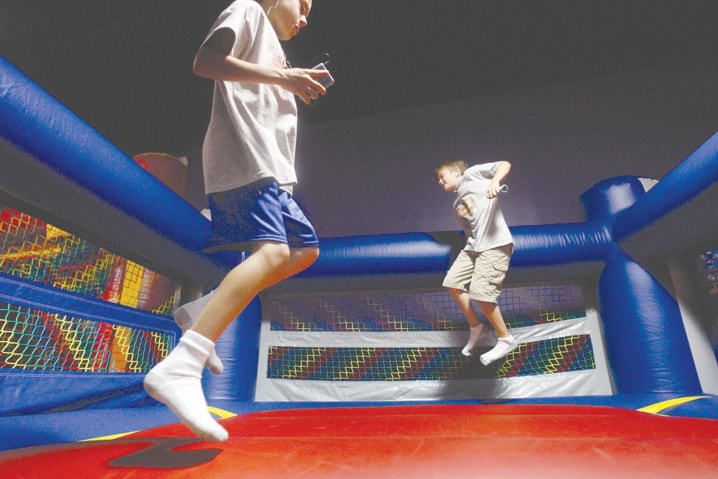TORONTO — Bouncy castles have become a fun, familiar fixture at indoor playgrounds, carnivals, fairs and backyard gatherings, but a new Canadian-led study finds that more children are being injured on inflatables than on mechanical amusement rides.
Lead author Kathryn Woodcock is director of the THRILL Lab (Tools for Holistic Ride Inspection Learning and Leadership) at Ryerson University, which has studied various aspects of amusement ride design and engineering for 10 years.
Her interest in researching amusement ride injuries stemmed from seeking to learn how such mishaps occurred. Given the rarity of ride injuries, using a national level database offered the best chance of having enough data for meaningful analysis, Woodcock said in an email interview.
“It makes sense to differentiate by ride type because the interaction between the rider and the ride depends on the type of device it is, and the ‘failure modes’ are different,” added Woodcock, professor in Ryerson’s school of occupational and public health.
With no national reporting regulations for amusement ride injuries in Canada, Woodcock analyzed data collected by the U.S.-based National Electronic Injury Surveillance System (NEISS) in 2010. The findings were published in the February issue of the journal Safety Science.
Woodcock reviewed injury reports collected from around 100 hospitals across the U.S. which were recruited to take part in NEISS. The 476 records included in the analysis represented a national estimate of 13,770 injuries associated with amusement rides for the country in 2010. Each report included the injured person’s age, gender, ethnicity, diagnosis and the nature of their hospital visit.
The study found that inflatable bounces accounted for 42 per cent of amusement injuries in all age groups, with more than half of the injuries in kids aged 15 and under. Inflatable devices — including inflatable slides — accounted for 79 per cent of falls.
The study also revealed that 20 per cent of injuries were from roller coasters, followed by carousels (three per cent) and bumper cars (three per cent). One-third of the injuries reported did not specify the particular ride.
“For the reports that identified the type of ride, inflatable bounces and slides were involved in more reports than mechanical rides,” Woodcock said. “This is consistent with other observations that patron-directed rides are more vulnerable to errors and misuse.
“This is an important finding to confirm, because many people perceive mechanical failure as their chief concern. The types of rides reflected in the injuries sustained across the age spectrum tends to correspond to the types of rides used at different ages.”
Females made up a slight majority — 58 per cent — of injured riders. Boys made up 65 per cent of the 0-5 age group, but females were the majority in every other age group.
Woodcock said she was “surprised and disappointed” at how poorly the rides were described and how little information was collected about the mechanism of injury.
“If we don’t collect information about the ride and how the experience failed, we are limited to analyzing age, gender and injury severity, and not getting to the bottom of design features that may not meet riders’ needs, or that may encourage or allow unsafe rider behaviour.”
While the study gives an overview of the U.S., Woodcock said “we can’t claim that the same patterns apply to Canada.” She said a national reporting scheme would be informative to Canadians, but noted that the study has shown simply collecting records isn’t enough to be informative.
“If and when we collect national data in Canada, we need to prepare for the analysis we want to do with the data.”
Woodcock said it’s important not to overload inflatables with too many children or to have heavy or high-energy preteens jumping in the bounce at the same time as toddlers. Individuals should also slide — not jump — down an inflatable slide in the correct position one at a time, she added.
Operators also need to monitor rider behaviour closely, and ensure the inflatable has been set up properly, with all the tie-downs properly secured in the appropriate manner for the location, Woodcock noted.
If outdoors, it should be removed from operation if manufacturer’s weather requirements are not met, such as high wind, she added.
“It can be tough for parents to verify that inflatables have been licensed for operation, but it is worth it to check for permits and watch before allowing your own children to bounce. A parent’s instincts will often notice the difference between exuberant play and wild behaviour.”
Follow (at)lauren—larose on Twitter.
———
Online
http://www.ryerson.ca/thrill
